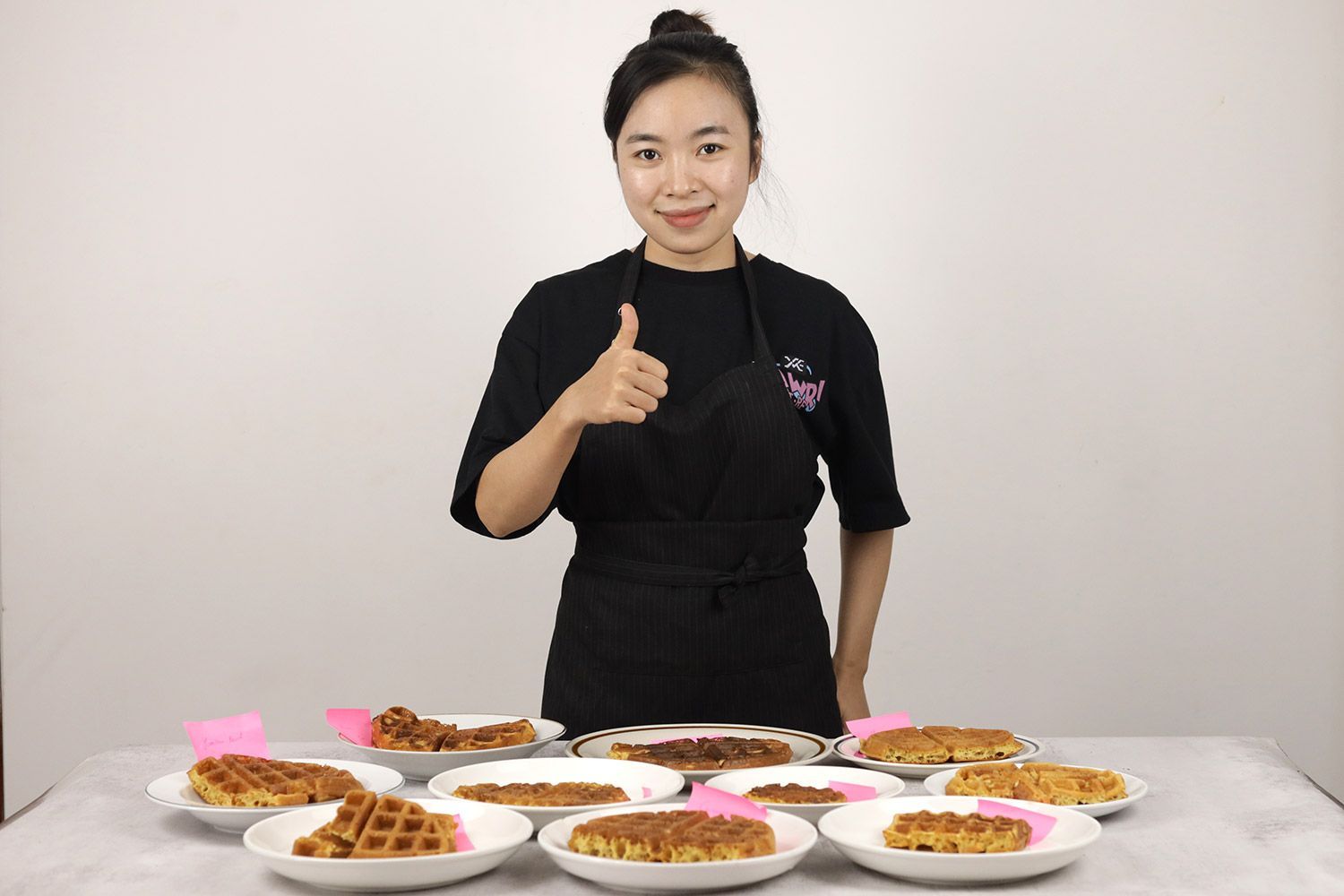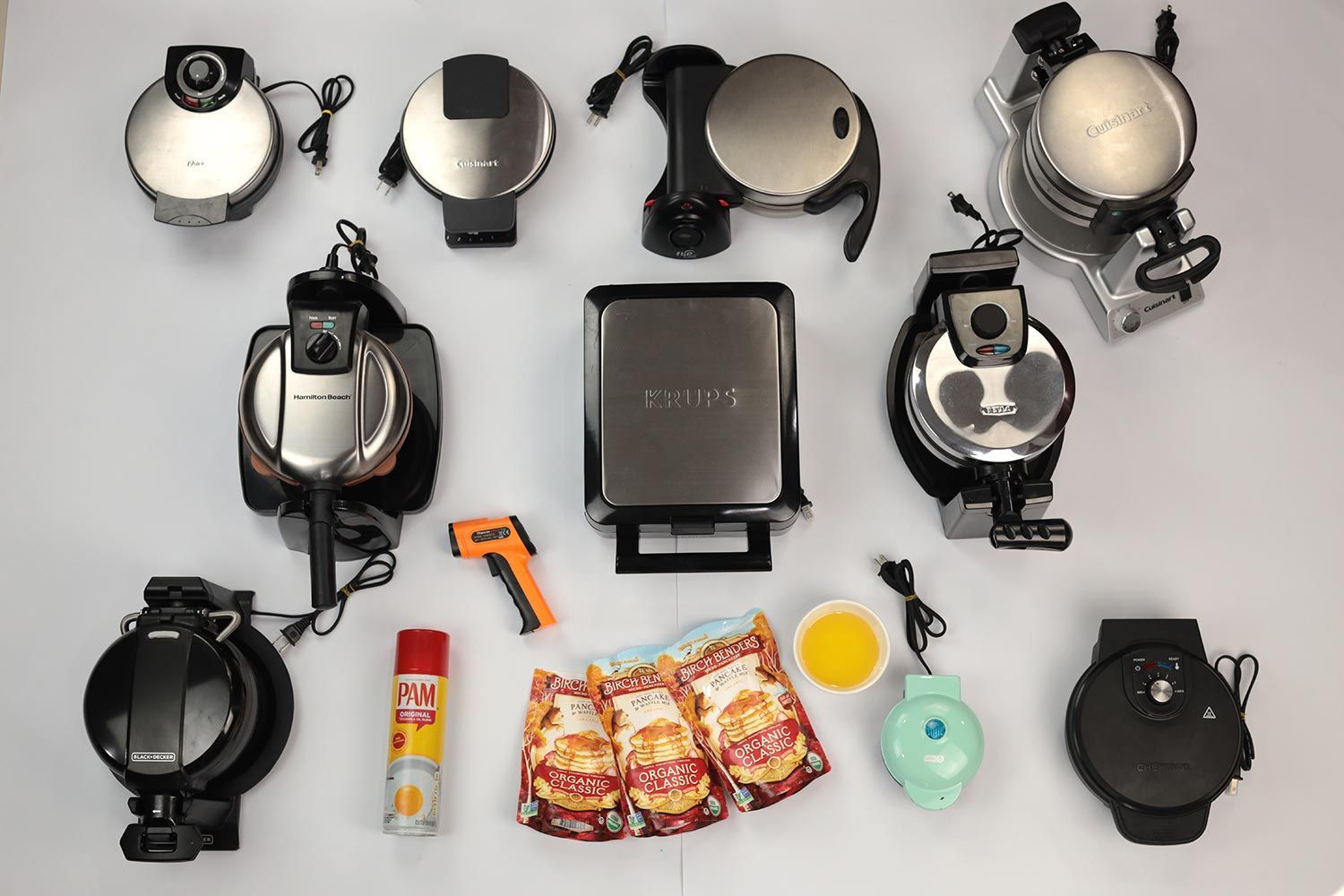Our recommendations are made independently. We may receive commissions from purchases made via our links.
Self-Mixed Recipe for Waffle Makers
Many people prefer to mix waffle batter from scratch rather than using boxed mix. To best reflect this, our waffle maker review includes a self-mixed recipe.
This test is part of How We Test Our Waffle Makers v1.1
The waffle that your machine produces dramatically depends on the kind of batter you use. The proportions and the ingredients can drastically affect the quality and texture. So, to best reflect the performance level of each waffle maker, we test them using three different recipes.

By comparing the scores between each recipe, you can see how well the performance of the waffle maker carries between different recipes. On a grander scale, you can also see how it fares against other models on the market.
This article is about our self-mixed recipe, designed to ascertain how the best waffle makers deal with a made-from-scratch batter.
What’s New in v1.1
We made major changes to the recipe in this new testing methodology update. On the advice of our chef, we have updated the recipe and added new ingredients. Waffles made from an earlier recipe (v1.0) tended to be bland. The recipe also didn't cook as we'd like. Most waffles were produced with overly burnt crust, while the interiors were mushy and underdeveloped.
Three new additions include clarified butter, warm milk, and sugar. The butter substitutes cooking oil in the new recipe. And for sweetening, we use sugar instead of honey.
When put to the test with a batch of new waffle makers, coloration and texture was improved. The new waffles were more flavorful, too. The sugar gave them a sweeter taste, while the clarified butter produced a distinct buttery aftertaste.
Why the Test Matters
Despite the widespread availability of pre-mixed batter, many people still prefer to make their waffle batter from scratch.
It’s not just because it’s simple and cheap to make but also because self-mixing allows for greater versatility. You can change the proportions of the ingredients to suit your taste. As such, a waffle made from a self-mixed batter will always taste better than one that’s baked from an out-of-the-box batter mix.
Since this is the definitive way to make waffles for so many people, it is one of the most important parts of our performance tests. It makes up 40% of the overall performance score.
Testing Recipe
Our chefs have adapted popular waffle recipes into our own and change the proportions to suit our taste. Inspirations were taken from many sources, such as BBC Good Food and AllRecipes.
This recipe can make roughly 4 servings of 7-inch waffles.
Self-Mixed Recipe v1.1
- 2 cups all-purpose flour
- 4 teaspoons baking powder
- 1 ½ cups warm milk
- 2 eggs, whole
- ⅓ cup butter, melted
- 1 teaspoon vanilla extract
- 2 ½ tablespoons white sugar
- 1 teaspoon salt
Self-Mixed Recipe v1.0
- 3/2 cups all-purpose flour
- 3 teaspoons baking powder
- 2 cups milk
- 2 eggs
- 4 ½ teaspoons oil
- 1 ¾ teaspoons vanilla extract
- 4 ¼ honey
- A pinch of salt
Instructions:
Step 1: Pre-heat the waffle maker to 180°C — 200°C.
Step 2: Mix flour, salt, baking powder, and sugar together in a bowl.
Step 3: Clarify butter in a saucepan.
Step 4: Beat the eggs in a separate bowl, then combine the eggs together with milk, clarified butter, and vanilla.
Step 5: Combine the milky mixture with the flour mixture. Mix until they’re blended together.
Step 6: Pour the batter into the waffle maker.
Testing Procedure
Our testing methodology is built from the ground up. For each step that you see in this guide, there would be countless trials and errors and meetings behind them. It took us an entire month to finalize the testing structure and began testing in earnest.
How Did We Find the Most Optimal Temperature and Time Settings for Our Waffle Makers?
No two waffle makers are similar to one another. Each one will have a different control system. The arrangement and strength of their heating elements will also undoubtedly differ. As such, it makes it very difficult for us to compare the performance of each model accurately.
That’s where the calibration test comes in. The primary goal of this test is to find the optimal temperature and time setting that would result in the best-quality waffle. It allows us to judge each waffle maker more fairly. It also makes it easier for us to compare them all with one another by equalizing all models to their best.
We first use the accompanying user manual to find the temperature and timing settings recommended by the manufacturer. The first batch is produced with this setting.
After our in-house chef has judged its quality, our reviewers make adjustments based on their recommendations (lowering temperature, increasing time, etc.)
We repeat this process until we have found the best settings possible based on the quality of the last waffle.

The Calibration Process
We perform a minimum of three small tests to figure out the best cooking time for each waffle. These tests only aim to find the best cooking time for each waffle maker. Temperature is usually adjusted to around 180°F and 200°F and fixed there. For waffle makers that don’t have a browning level dial, we wait until the plates’ temperature is between this range, then pour the batter in.
Performance Test
After the calibration phase came the actual performance test. The waffle is cooked in accordance with the pre-established temperature and timing settings. Then, the products are assessed by our reviewers and chef.
Scoring Scale
A finished waffle is scored using three key metrics: coloring (35%), texture (25%), and taste (40%).
Cooking time is also taken into account. A good waffle — one with great coloration, texture, and taste — usually takes less than 10 minutes to finish cooking. So, if a waffle maker fails to make an edible waffle in less than 10 minutes, it is a failure. The total score for the waffle maker in the test will be zero.
Coloring
For a waffle to be considered “visually appealing,” its coloring must be just right. It should be a perfect golden brown. The color shouldn’t look so dark that it seems burnt, but not so light that it feels like the batter hasn’t been thoroughly cooked.
We decide the waffle’s overall scoring based on the general color tone of the waffle’s crust.
In addition to the color tone, we will also consider the uniformity of the coloring. The color tone should spread evenly throughout the waffle without unusually dark or light spots. Scores are deducted accordingly based on how heavy the discolorations are.
- Golden brown, uniform color distribution: >=9.5
- Light or dark gold, minimal discolored spots: 8 - 9.4
- Light or dark brown, multiple discolored spots: 7 - 7.9
- Very light gold or very dark brown, multiple discolored spots: 5 - 6.9
- Pale gold (undercooked) or black (charred): <=5
This scale is used to rate both sides of the waffle.



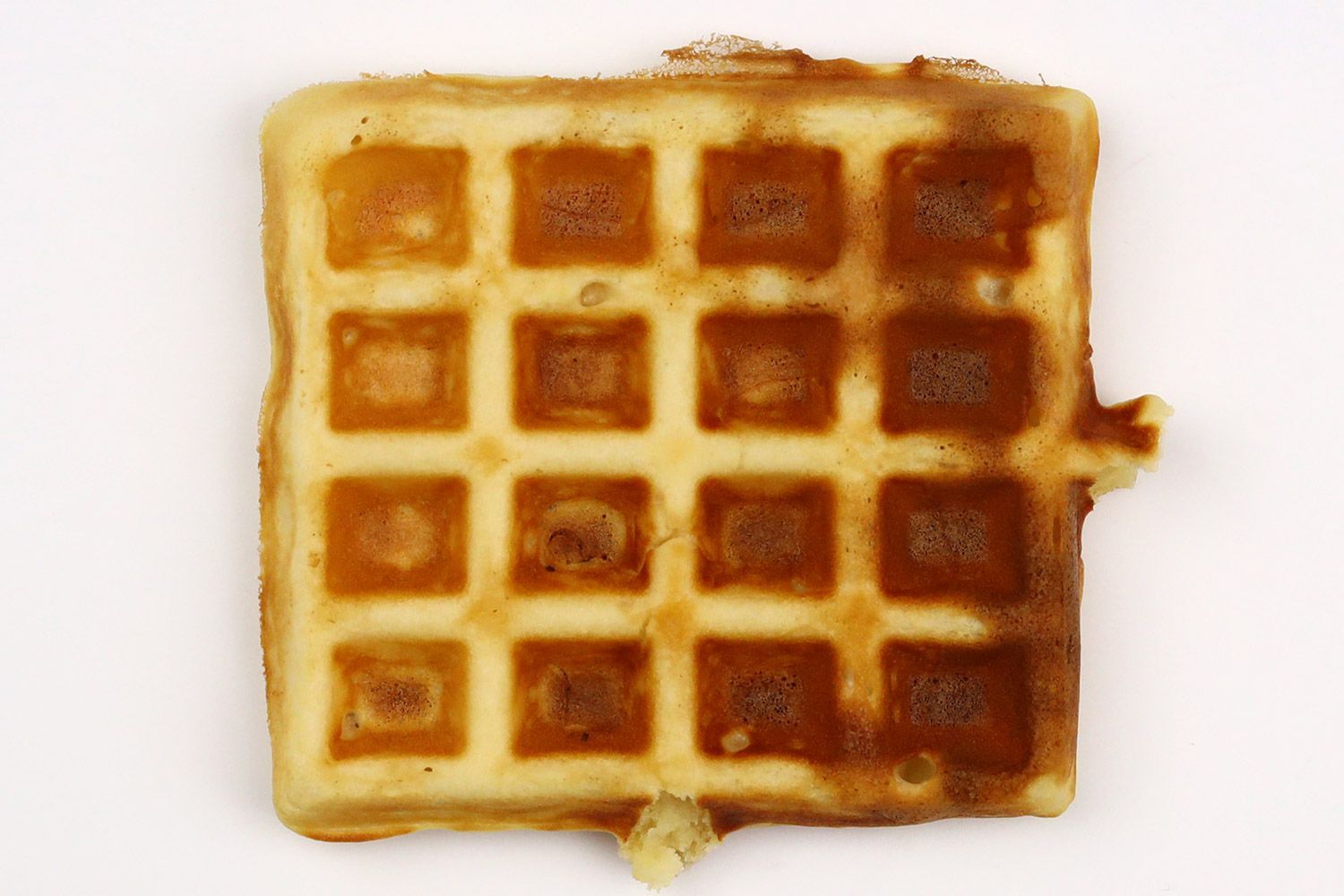
In cases where coloring differs between the two sides of the waffle, the total score is calculated by averaging the individual score of each side. The score is then subtracted per the five-level scale above. With each degree of difference, 0.25 is taken off from the total score.
For example:
In our performance test, the Euro Cuisine made a waffle with distinctly contrasting coloration. By averaging the scores of the two sides, we received a rough total score of 7.75 ([7.5+8]/2).
Because the score bands of the top and bottom differ by one level on our scale, a further 0.25 is subtracted.
We finally received a final total score afterward being 7.5.
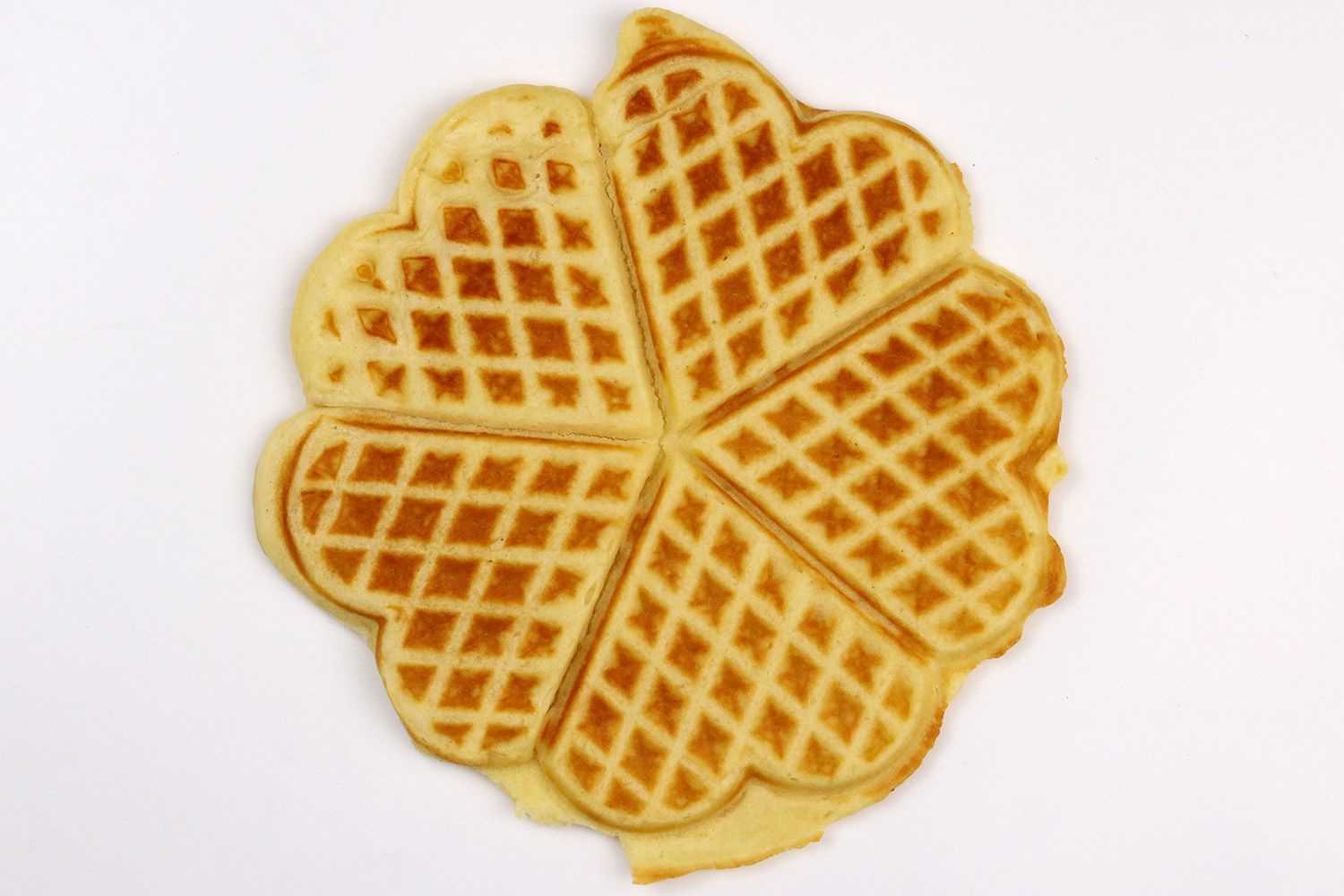
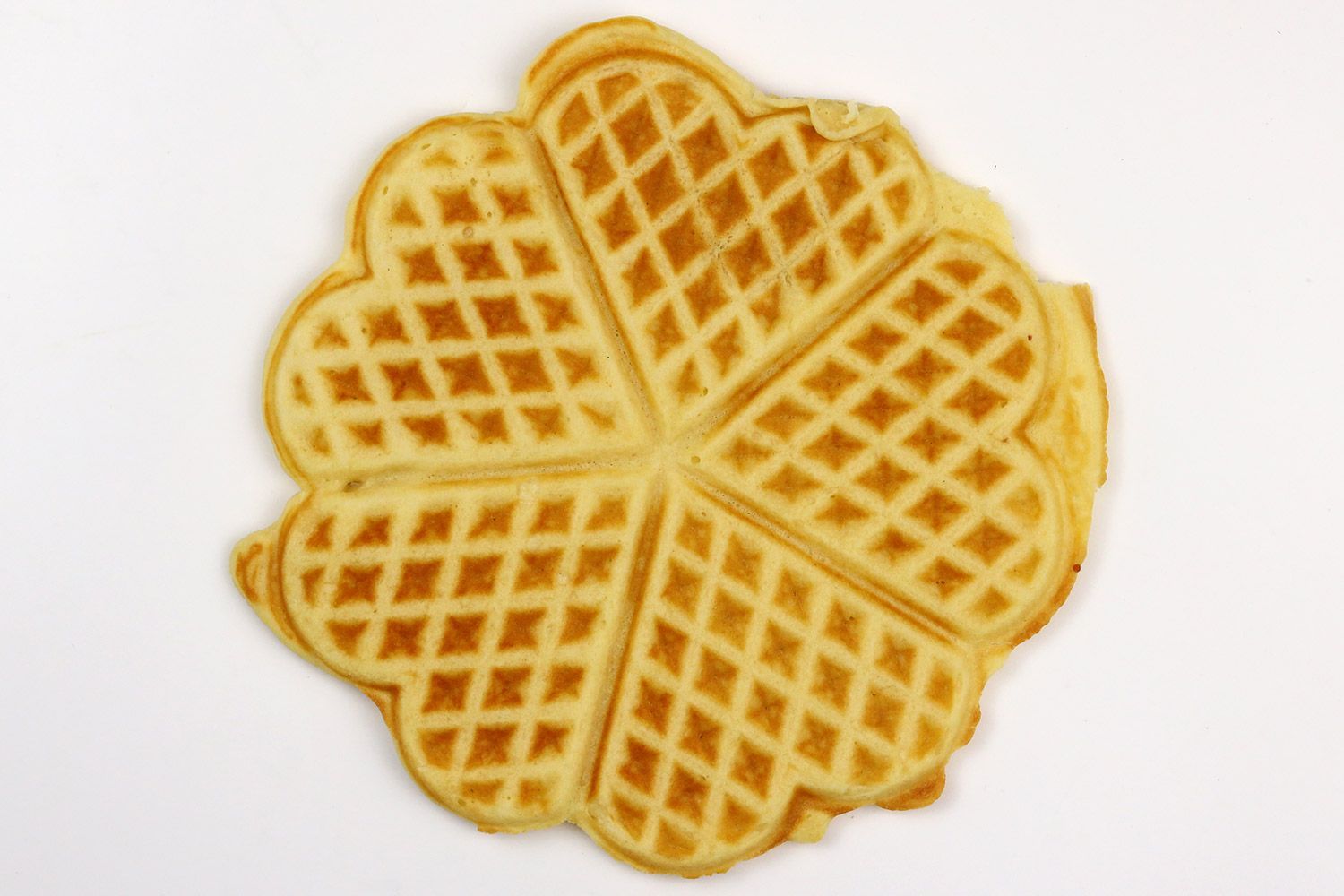
Texture
We also note the number of air bubbles present inside the waffle. They’re formed via a process called aeration. Air bubbles contribute to the waffle’s fluffiness. The more numerous and pronounced the air bubbles we observe in the waffle’s core, the better the final score.
- Perfect (Multiple bubbles observed, perfect springiness, and interior is fully cooked): >=9.5
- Excellent (Displaying a decent number of air bubbles, decently springy, interior is fully cooked): 8 - 9.4
- Good (Good number of bubbles, springy but may not fully come back to original shape, interior is fully cooked): 7 - 7.9
- Mediocre (Small number of bubbles, springiness is minimal): 5 - 6.9
- Bad (Little to no bubbles observed, does not return to original shape at all after compression, inside is undercooked and runny): <=5
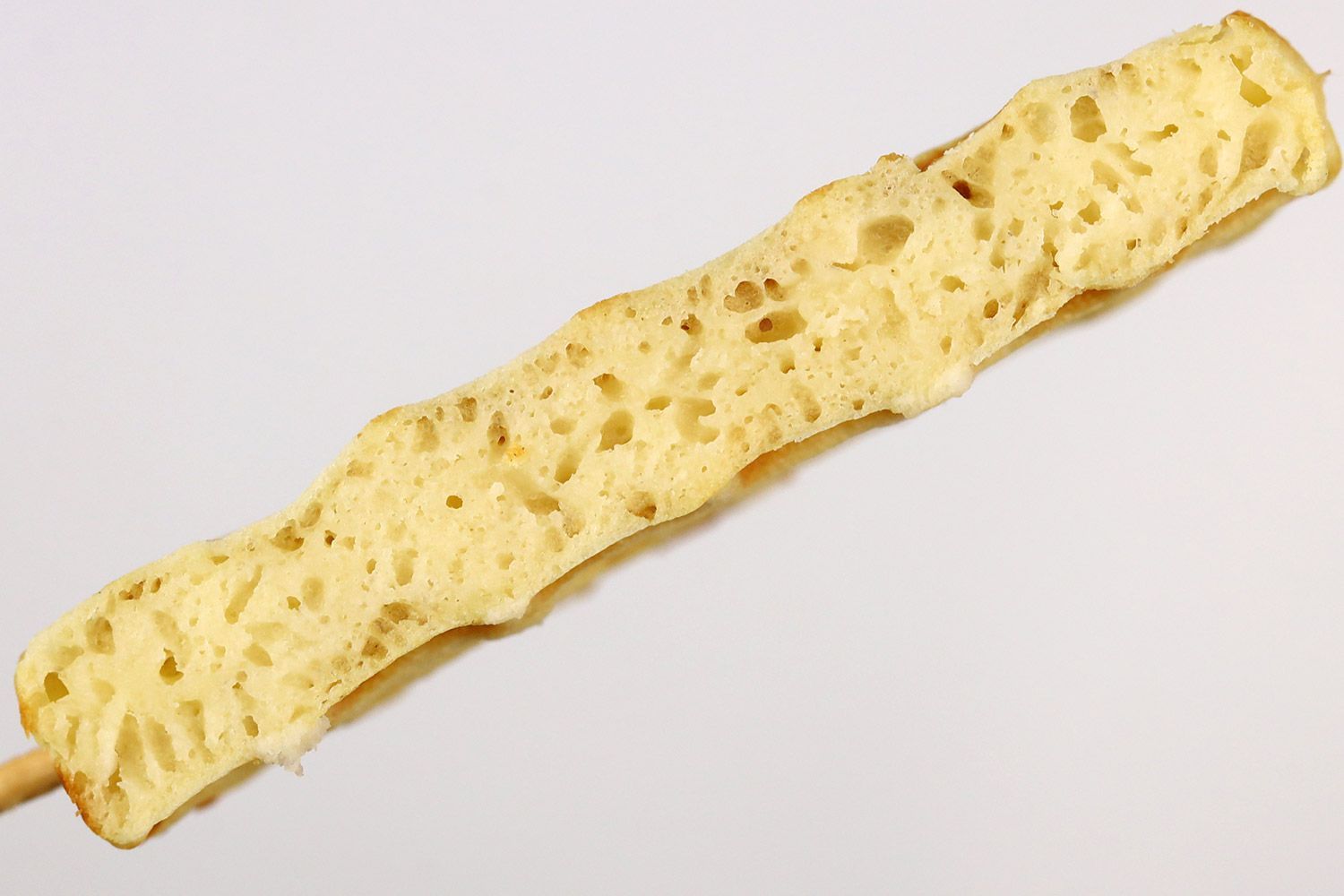
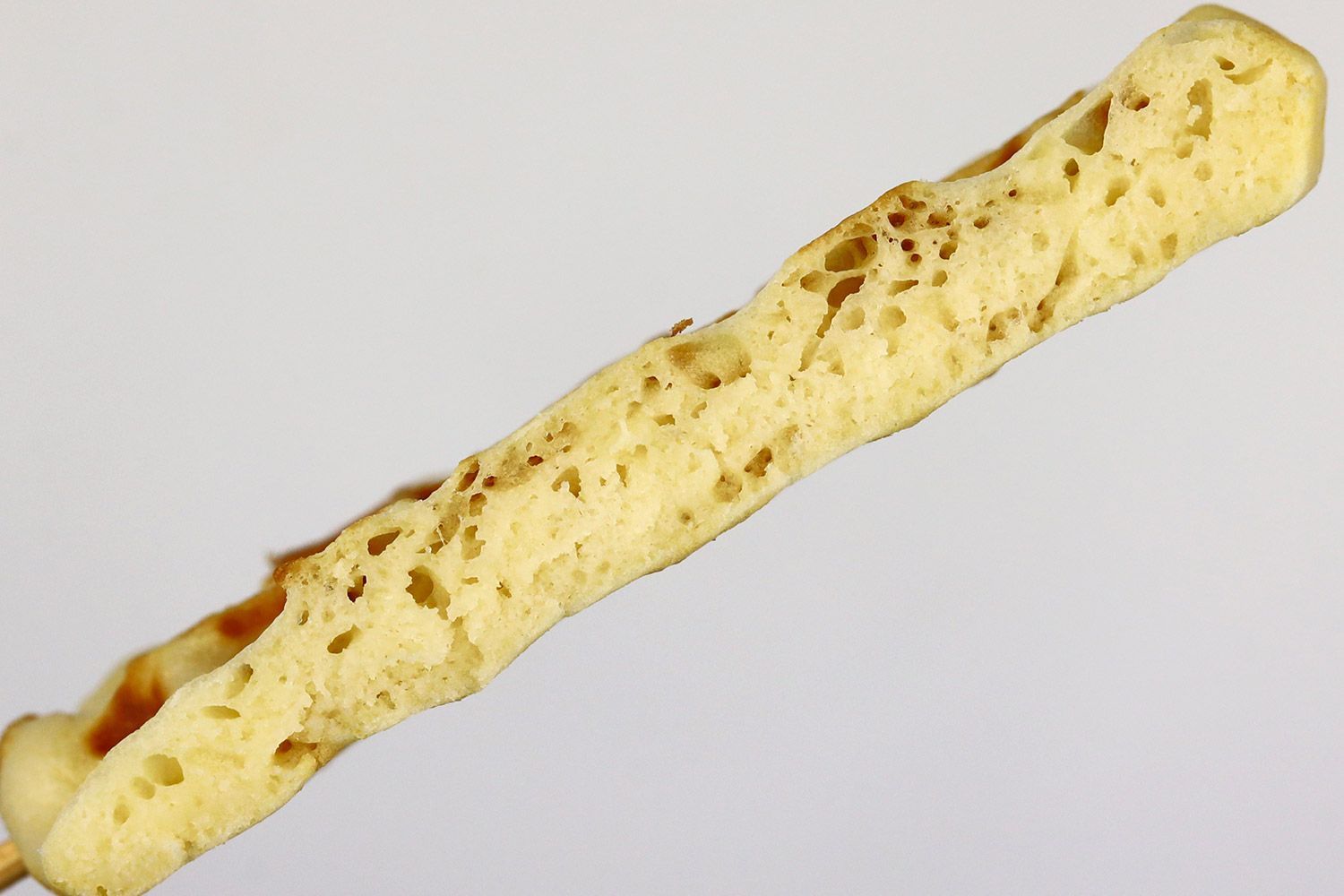
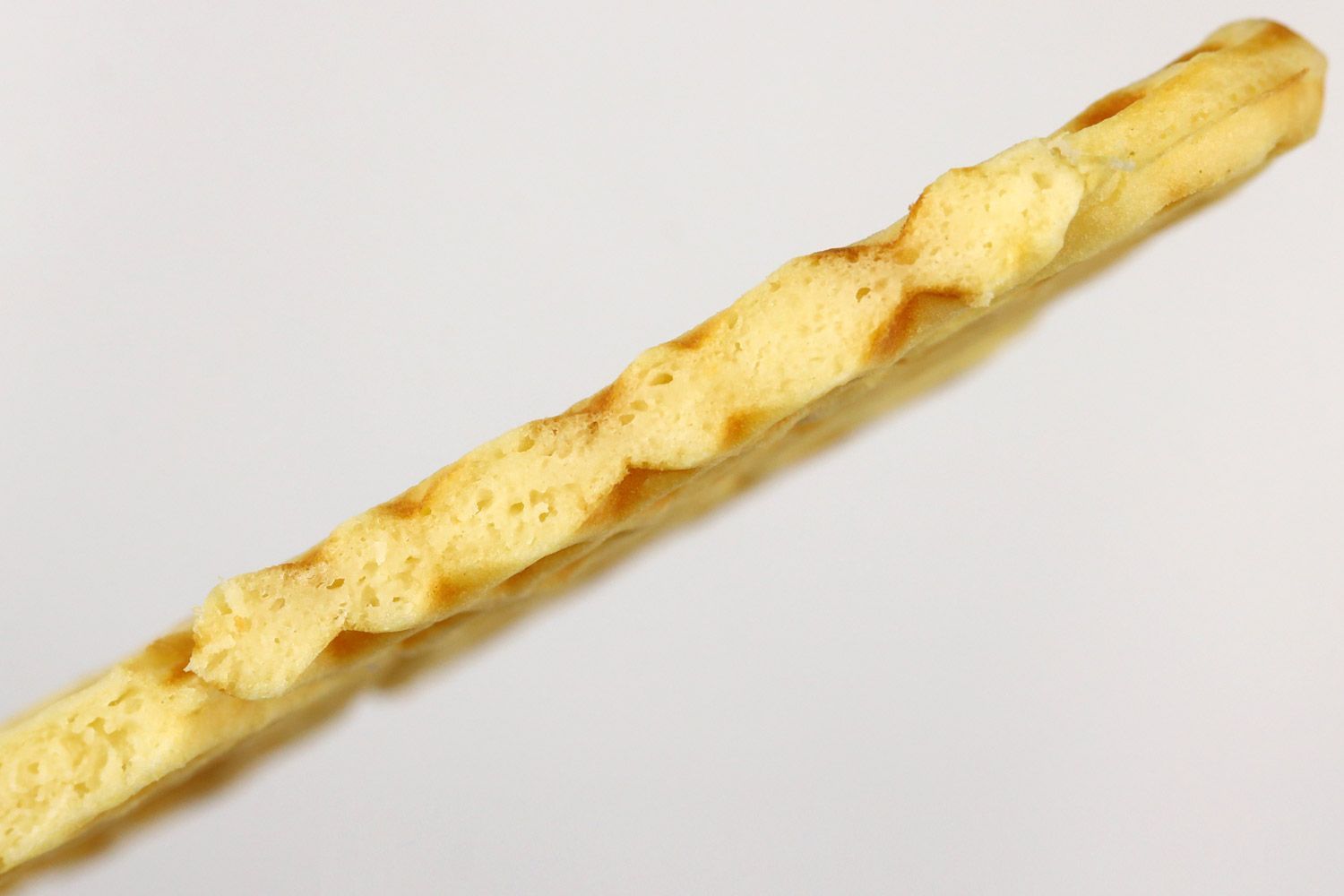
Taste
Palettes can differ vastly from one person to another. Some people prefer their waffles to be soft, fluffy, and sweet, while others like them dark, crispy, and bitter.
Because the test is such a subjective factor, we rely on interviews. When a test batch is cooked up, we deliver them to our in-house chefs for tasting and grading. Using a 0-10 scale, they will grade the waffles based on the overall quality.
Directly overseeing the taste-testing process will be our chef, Tuyet Pham.
